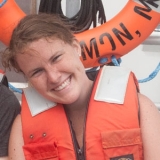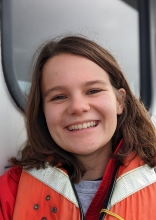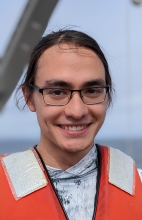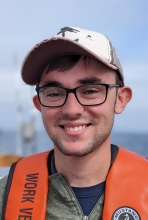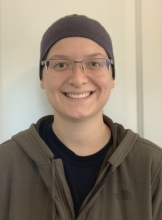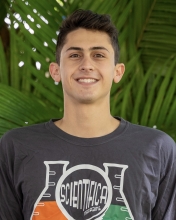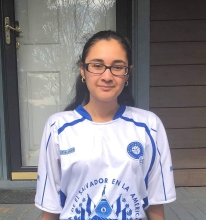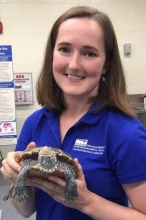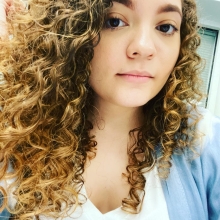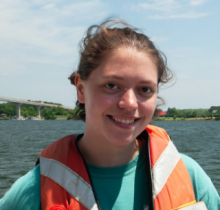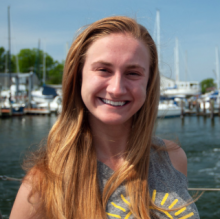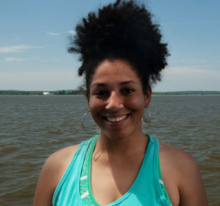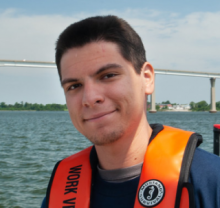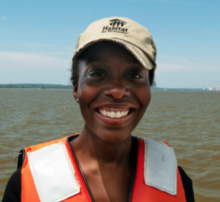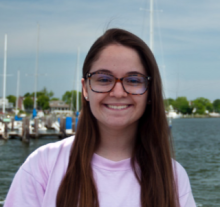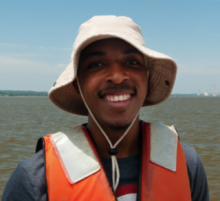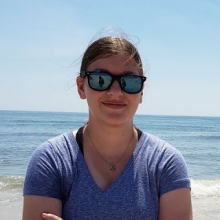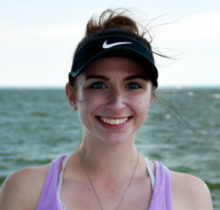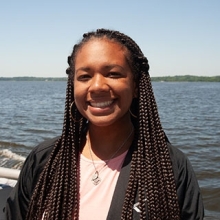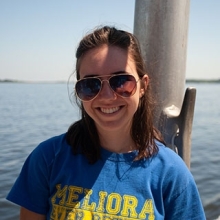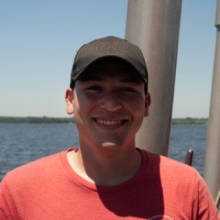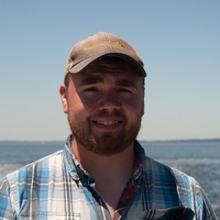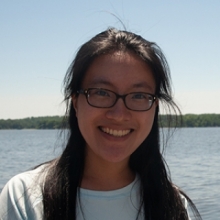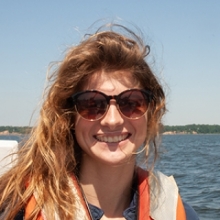Eight students will be presenting the summer work at the Ocean Sciences Meeting in March 2022!
Angela Cole, North Carolina State University
Class Year:
2013Mentor:
Larry Sanford, Ph.D.Project Title:
Characterizing Flow at the Susquehanna Flats
Abstract:
The Chesapeake Bay (CB) is the largest estuary in the United States. Water quality models in the CB depend on a predictive understanding of the physical, chemical, and biological processes that influence the transport and fate of sediments and nutrients. This study characterized flow at the Susquehanna Flats (SF) in the upper CB to show how submerged aquatic vegetation (SAV) influences hydrodynamics. The SF lie at the mouth of the Susquehanna River, which is the primary source of fresh water for the CB. From July 7-12, 2013, we deployed tide, wave, current velocity, and pressure gauges at seven sites around the SF to gather time series data on flow and its attenuation in and around the SAV bed at the SF. The design shows how spatial features including bathymetry, delta geometry, and grass bed geometry affect patterns of flow and transport. Data were processed and analyzed using standard MATLAB time series analysis techniques. Our hypothesis was that the flow would predominately be diverted around the grass bed into adjacent deep, unvegetated channels. Seagrass was minimally present during the deployment. Analysis shows that tide, river flow, and wind all play key roles in the physical processes at the SF.
Presentations:
Cole, A.*, and L. Sanford. 2013. Characterizing Flow at the Susquehanna Flats . SACNAS National Conference, San Antonio, Texas .
